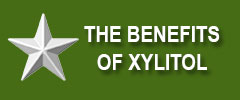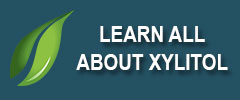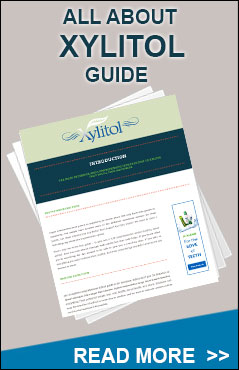The author this paper, H. Mehnert, is a German diabetologist who helped promote the use of implantable insulin pumps more than 40 years ago. He realized how much of a problem has come from our overuse of foods that contain sugars or, like processed wheat products, are easily and rapidly broken down to glucose, the sugar we all use for energy, but unfortunately, get way too much of. He looked at fructose, xylitol, and sorbitol as alternatives and came up recommending fructose because of the GI effects (diarrhea) caused by xylitol and sorbitol. As he pointed out this effect comes from their not being absorbed rapidly so they act to pull water into the GI tract where it softens the stools. It does go away with continued use.
His observations have been softened a lot by later studies showing the dangers of fructose in stimulating hunger and helping lead to our obesity epidemic. In view of this and its other benefits xylitol gains lots of credibility.
The first medical use of xylitol was for diabetics way back in the 1950s. It never really got off the ground then because fructose, in high-fructose corn syrup, was subsidized by the US government in their farm programs and soft drink manufacturers made such tasty products. And that much xylitol would wreak havoc with our GI tracts. But people are still looking. A recent study in South Africa with diabetic rats, for example, shows diabetic markers to normalize.
Internationale Zeitschrift für Vitamin- und Ernährungsforschung, 1976;15:295-324.
Abstract
The decreased glucose utilization in diabetes mellitus justifies the use of sugar substitutes (“diabetic sugar“) if two conditions are fulfilled: 1)The sugar substitute should be a carbohydrate which does not lead, or only to a slight degree, to hyperglycaemia and thus, in this respect, differs distinctly from sugars such as glucose and saccharose. 2) The sugar substitute must not cause undesired side-effects. The absorption, utilization and side-effects of the sugar substitutes fructose, sorbitol and xylitol were investigated. They were found to be more slowly absorbed than glucose and thus to offer the advantage of better utilization under conditions of limited insulin production. However, the particularly slow passive absorption of sorbitol and xylitol can sometimes be a disadvantage, since osmotic diarrhoea may occur after administration of high oral doses. The sugar substitutes enter the metabolism enzymatically and are utilized mainly in the liver. The peripheral state was investigated after intravenous, intraduodenal and oral administration of glucose and fructose to healthy subjects. Liver metabolism was examined (Dietze) by comparing hepatic venous and arterial concentrations after intravenous administration of the sugars. Also, diabetic patients received glucose and fructose orally. As previously demonstrated, the investigations using several techniques showed a smaller influence on blood glucose and serum insulin concentrations after administration of fructose, sorbitol and xylitol than after glucose. If no metabolic changes occur after intravenous administration of high doses, no such changes need be expected after oral administration of small doses. Nor did measurements in hepatic venous blood (Dietze) show any marked effect of fructose on the blood glucose level. The healthy subjects showed no significant changes in blood glucose or serum insulin concentration after either intraduodenal or oral administration of fructose, whereas they showed a considerable increase after glucose administration. Investigations in adult-type diabetics revealed a better utilization of fructose than glucose. With correct dosage, sugar substitutes are able to increase the carbohydrate tolerance and, under certain conditions, to achieve a relative stabilization of the metabolism of unstable diabetics. The antiketogenic activity of sugar substitutes is particularly pronounced. Side-effects such as high blood levels of urea, lactate, triglycerides and bilirubin or a decrease in hepatic adenin nucleotides do not occur after oral administration, nor are they of importance after intravenous administration with correct dosage. The osmotic diarrhoea occurring after intake of sorbitol or xylitol is caused by their slow absorption and limits the consumption of these sugar substitutes. In the often obese adult-type diabetics, the calorie intake inherent in the consumption of diabetic sugars may have an unfavourable influence on their weight.
Access further information on this study here at Pubmed.
Related Articles
Understanding the Importance of Xylitol Dental Health
Can xylitol play a role in your dental care program? People around the world are now using this all-natural sweetener. While it was discovered in the late 19th century, xylitol didn’t really begin making its way into the public consciousness...
Xylitol Animal Studies
Publication: IPCS Inchem Read original study here. XYLITOL Explanation Toxicological monographs were issued in 1977 and 1978 (see Annex I, Refs. 44 and 49). Since the previous evaluation, additional data have become available and are summarized...
Sugars and Sweeteners
The Canadian Diabetes Association compiled information on which sweeteners increase blood glucose levels, and which do not. View the tables here. Related...
Reasons to Use Xylitol Chewing Gum
The right xylitol chewing gum can help you boost your overall oral health. Beginning in Finland in the 1970s, researchers began studying the diverse benefits of xylitol and were, in fact, quite surprised by what xylitol had to offer. Xylitol...
The Effects of Equal Caloric Amounts of Xylitol, Sucrose, and Starch
The effects of equal caloric amounts of xylitol, sucrose and starch on insulin requirements and blood glucose levels in insulin-dependent diabetics. By Hassinger, Suer, Cordes, Krause, Beyer, and Baessler. Diabetologia, 1981 July, pages 37-40...
Dental Journals on Xylitol
Randomized Controlled Trial: A Randomized Controlled Clinical Trial Comparing A Remineralizing Paste with an Antibacterial Gel to Prevent Early Childhood Caries KA Plonka, ML Pukallus, TF Holcombe, AG Barnett… – Pediatric dentistry, 2013...




